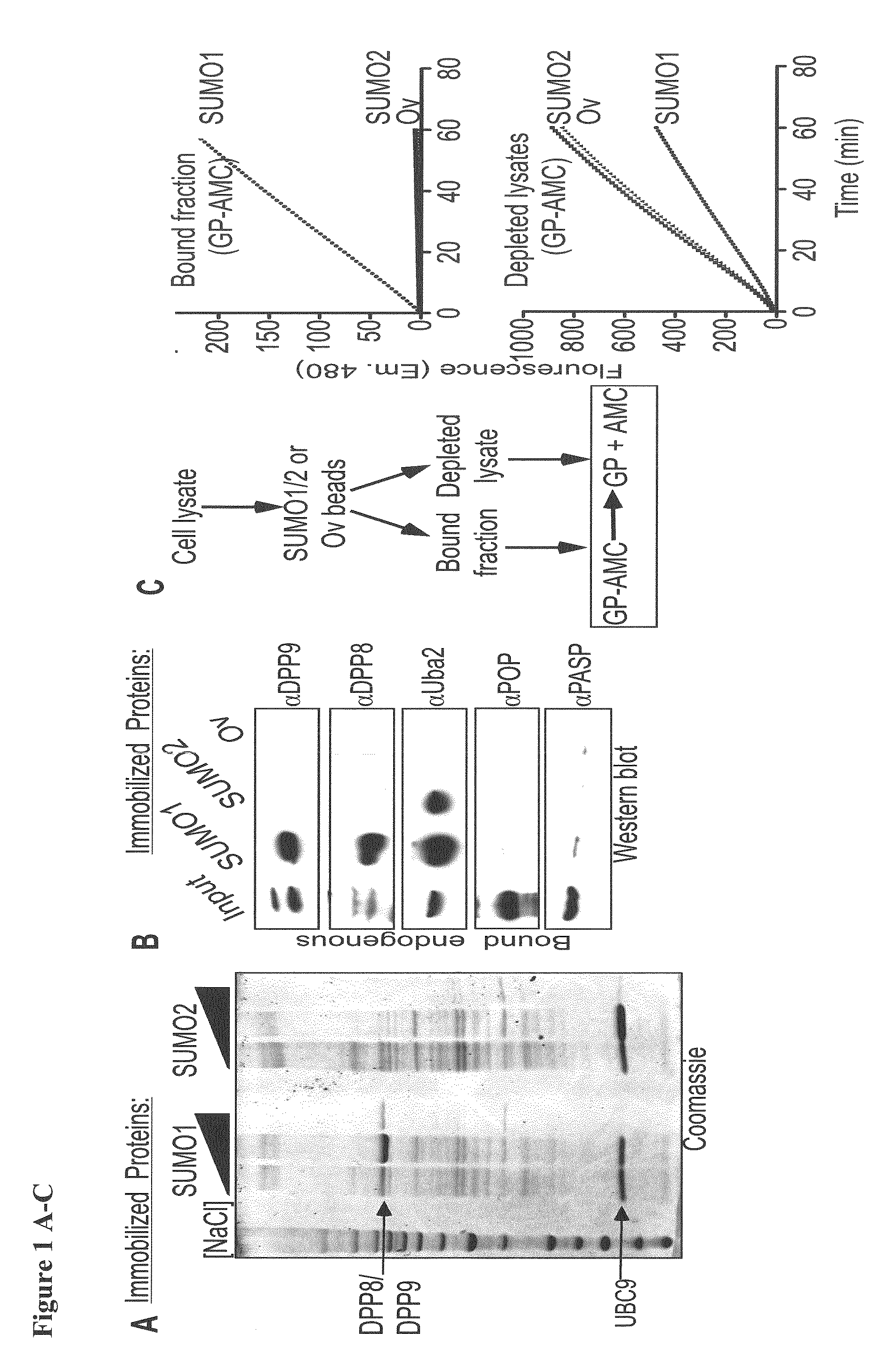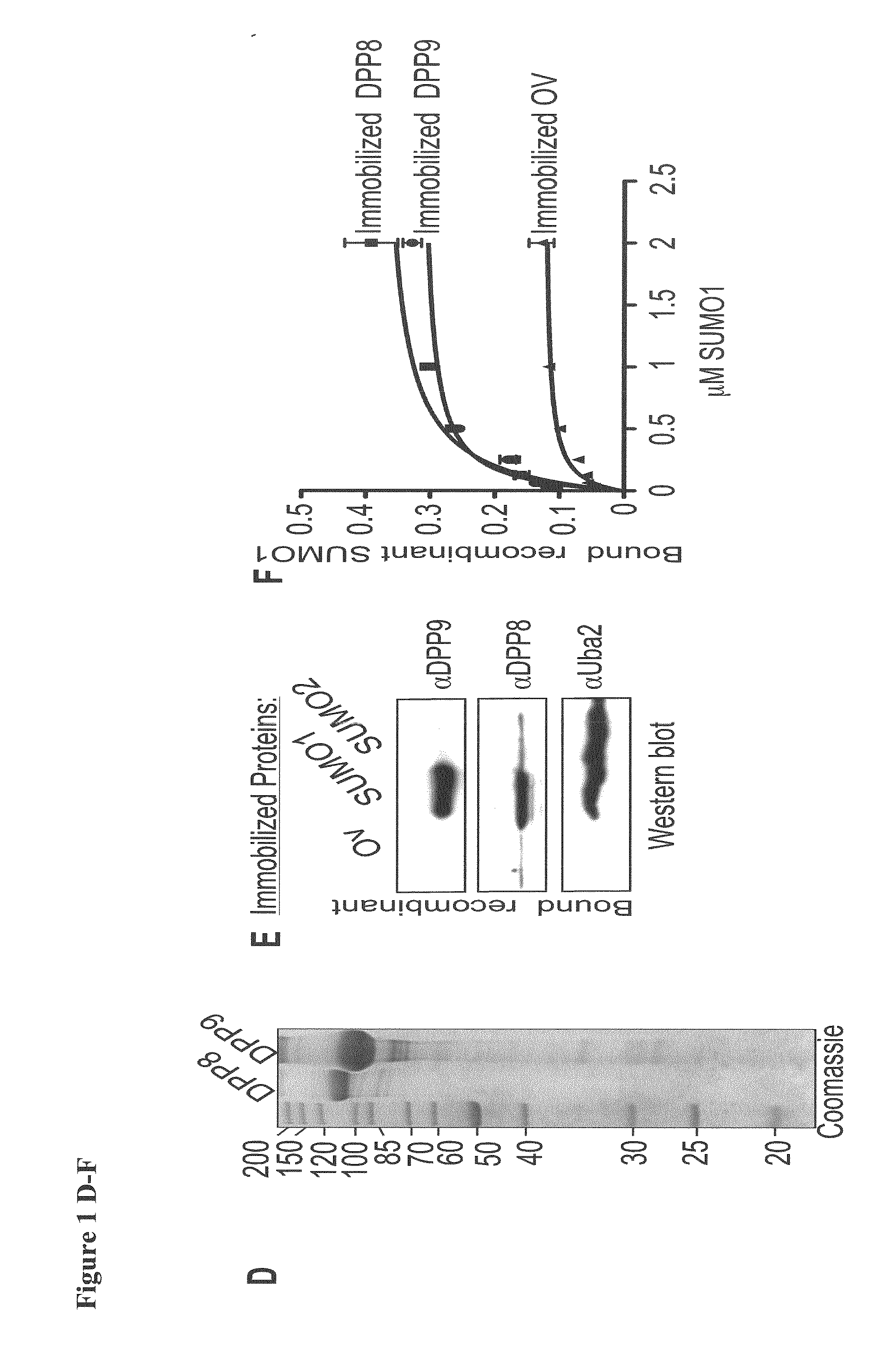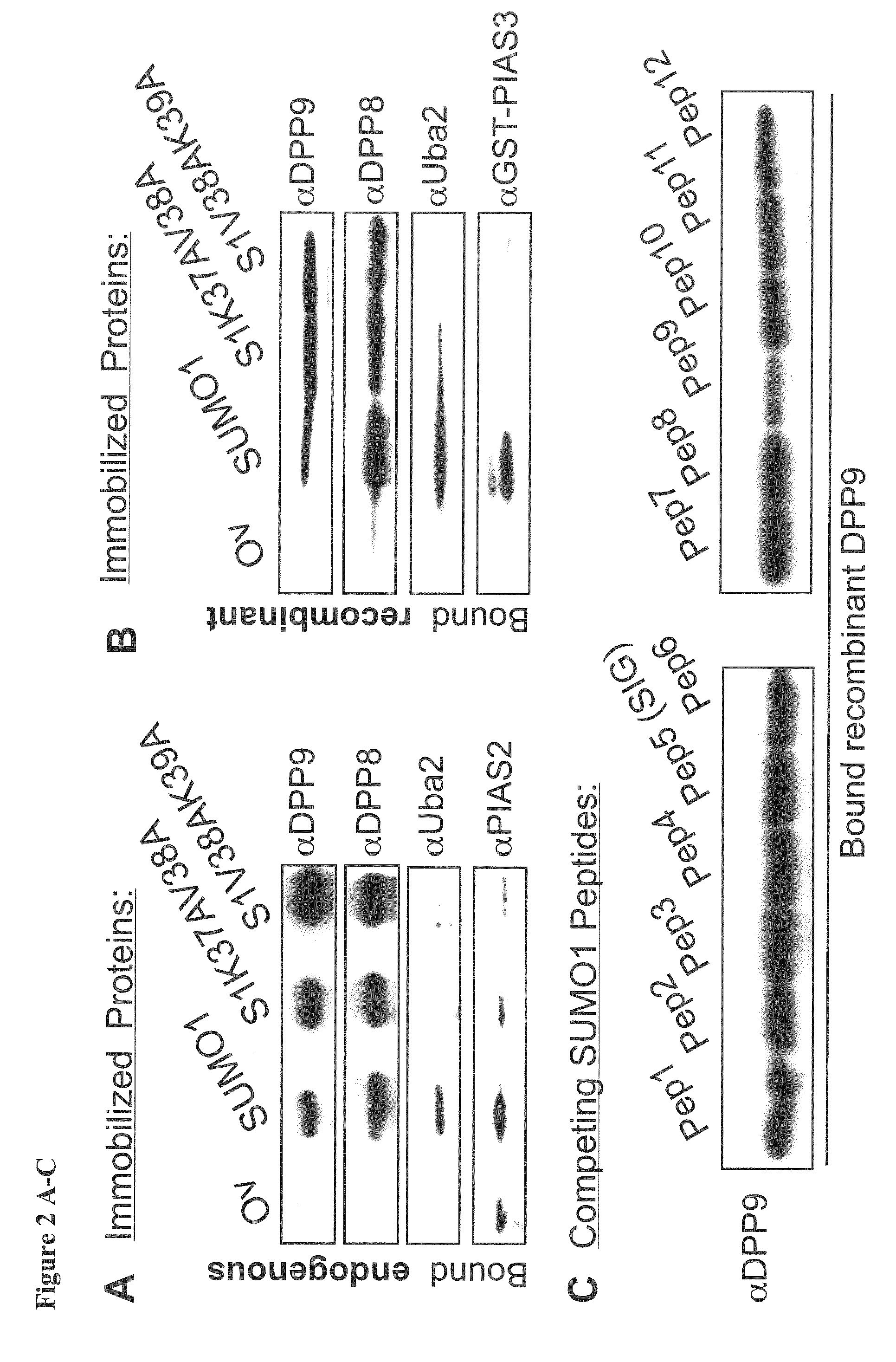DPP8 and DPP9 Peptide Inhibitors
- Summary
- Abstract
- Description
- Claims
- Application Information
AI Technical Summary
Benefits of technology
Problems solved by technology
Method used
Image
Examples
example 1
Identification of a Novel Interaction Between SUMO1 and the Cytosolic Prolyl Peptidases DPP8 and DPP9
[0098]The inventors identified DPP8 and DPP9 in a screen for proteins that interact preferentially with either SUMO1 or SUMO2 (FIG. 1A). Using western-blot analysis the inventors verified that both peptidases interacted with SUMO1 (FIG. 1B). To control the assay the inventors tested for the presence of Uba2, which was previously shown to contain a SIM. Importantly, in contrast to Uba2, which interacts with SUMO1 and SUMO2, DPP8 and DPP9 showed a strong preference towards SUMO1 binding (FIG. 1B).
[0099]Next, following the incubation of cell lysates with immobilized SUMO-beads, the SUMO-bound fractions were eluted and assayed for prolyl-peptidase activity by measuring the release of AMC from the model substrate Gly-Pro-AMC (GP-AMC). Prolyl-peptidase activity was recovered specifically in fractions eluted from the SUMO1, but not on SUMO2 or ovalbumin beads (bead-bound fraction—FIG. 1C). ...
example 2
DPP9 Interacts with a Novel Interaction Surface on SUMO1: E67-Interacting Loop (EIL)
[0101]To study the preferential association of DPP8 and DPP9 with SUMO1 but not SUMO2, the inventors aimed to identify the surfaces on SUMO1 involved in these interactions. First the inventors analysed the interaction of DPP9 with SUMO1 mutants in residues which were previously shown via NMR and crystal structures to interact with SIM containing proteins (Song et al, 2004; Hecker et al, 2006; Reverter & Lima, 2005). The inventors constructed SUMO1K37AV38A and SUMO1V38AK39A mutants, and analysed the capacity of these SUMO proteins to pull-down endogenous DPP8 and DPP9 from cell lysates. For control, the inventors analysed the binding of known SIM-containing proteins, Uba2 and PIAS2, which did not interact with SUMO1K37AV38A and SUMO1V38AK39A. In a striking contrast, both endogenous and recombinant DPP8 and DPP9 still interacted with these SUMO1-SIG mutations (FIGS. 2A&B). These results show that the ...
example 3
Gain-of Binding by Point Mutations in SUMO2
[0105]To get more insight into the preferential SUMO1 binding of DPP9, the inventors analysed the homology between the SUMO paralogs in the newly identified EIL, and flanking regions. Sequence alignment shows that glutamic acid 67 in SUMO1 is replaced by aspartic acid in SUMO2; since both amino acids are negatively charged, the inventors assumed that this could not explain the strong preference in binding of DPP9 to SUMO1 (FIG. 3A). The alignment highlighted four amino acids that are not conserved in SUMO1 and SUMO2. Next, the inventors mutated single amino acids in SUMO2 to the corresponding ones in SUMO1 and tested their interaction with recombinant DPP9.
[0106]Strikingly, mutation of a single amino acid in SUMO2, aspartic acid 71 to the corresponding histidine residue in SUMO1, resulted in a full gain of binding to DPP9 (FIG. 3B). In contrast to DPP9, Uba2 interacted with all the SUMO2 variants to the same extent.
[0107]Taken together, th...
PUM
| Property | Measurement | Unit |
|---|---|---|
| Fraction | aaaaa | aaaaa |
| Molar density | aaaaa | aaaaa |
| Molar density | aaaaa | aaaaa |
Abstract
Description
Claims
Application Information
 Login to View More
Login to View More - R&D
- Intellectual Property
- Life Sciences
- Materials
- Tech Scout
- Unparalleled Data Quality
- Higher Quality Content
- 60% Fewer Hallucinations
Browse by: Latest US Patents, China's latest patents, Technical Efficacy Thesaurus, Application Domain, Technology Topic, Popular Technical Reports.
© 2025 PatSnap. All rights reserved.Legal|Privacy policy|Modern Slavery Act Transparency Statement|Sitemap|About US| Contact US: help@patsnap.com



